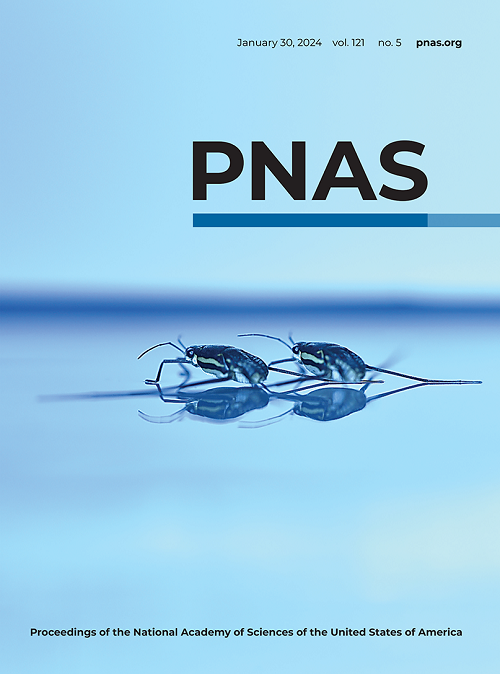LMX1B missense-perturbation of regulatory element footprints disrupts serotonergic forebrain axon arborization
IF 9.4
1区 综合性期刊
Q1 MULTIDISCIPLINARY SCIENCES
Proceedings of the National Academy of Sciences of the United States of America
Pub Date : 2025-04-01
DOI:10.1073/pnas.2411716122
引用次数: 0
Abstract
Pathogenic coding mutations are prevalent in human neuronal transcription factors (TFs) but how they disrupt development is poorly understood. Lmx1b is a master transcriptional regulator of postmitoticLMX1B调控元件足迹的错义扰乱了5-羟色胺能前脑轴突的轴向化
本文章由计算机程序翻译,如有差异,请以英文原文为准。
求助全文
约1分钟内获得全文
求助全文
来源期刊
CiteScore
19.00
自引率
0.90%
发文量
3575
审稿时长
2.5 months
期刊介绍:
The Proceedings of the National Academy of Sciences (PNAS), a peer-reviewed journal of the National Academy of Sciences (NAS), serves as an authoritative source for high-impact, original research across the biological, physical, and social sciences. With a global scope, the journal welcomes submissions from researchers worldwide, making it an inclusive platform for advancing scientific knowledge.

 求助内容:
求助内容: 应助结果提醒方式:
应助结果提醒方式:


